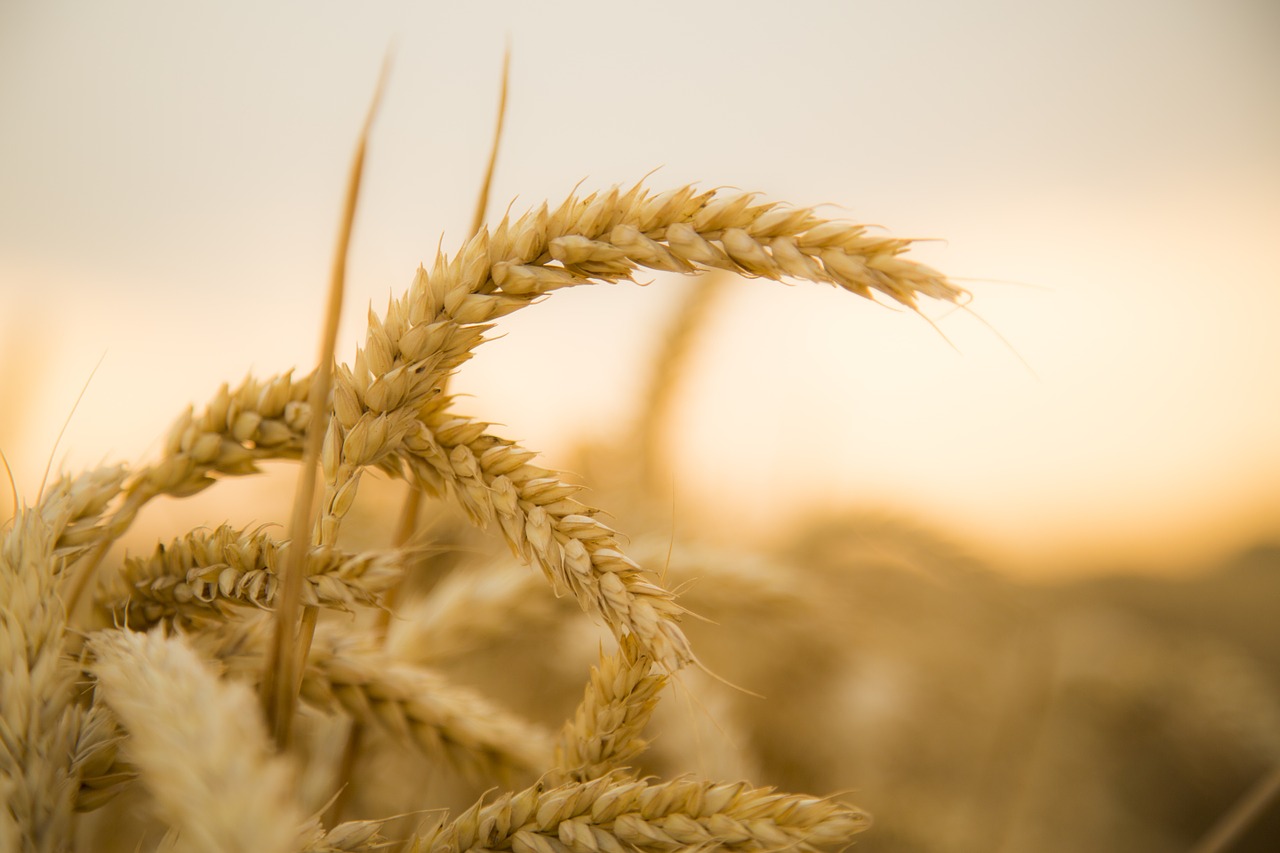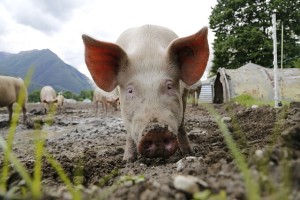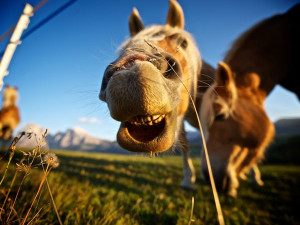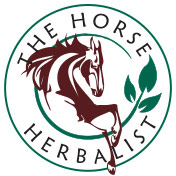
Wheat Intolerance – In Depth
Wheat intolerance is well documented in humans, but what about horses? And why might a natural product like wheatcause a problem?
Most readers will know someone who is ‘coeliac’ or wheat intolerant. Many may even have noticed increased gluten or wheat sensitivity in themselves -fuzzy brain, lethargy, bloating, skin problems etc. and wonder why such a staple food from the human and animal diet is now causing such problems. The answer may be in the breeds of wheat grown today.
Until the mid 1950’s the wheat grain that was grown had remained the same since biblical times. The original Emmer and Einkorn wheat varieties (triticum turgidum) were tall 14-chromosone grasses, which grew readily in the wild. Then man started manipulating wheat with the aim of making a shorter crop with yields higher than eight times the original grain and decreased production cost. These 48-chromosome hybridised (crossbred) wheat breeds were more commercially viable – easier to irrigate, spray for pests, and harvest. Scientists and Agronomists alike were excited about the potential for feeding the ever increasing global population.
Modern wheat
Over the last 50 years hybridisation (the process of combining different varieties to create a hybrid or crossbreed) has created thousands of strains of wheat, which are used in both human and animal commercial food production. Genetic modification and hybridisation of food crop plants is fraught with unintended negative health effects on both the humans and animals consuming them.
Dough from the original and ancient wheat varieties (including Spelt and Khorosan) had none of the ‘stretch and workability’ qualities of modern dough. Modern wheat is very high in the gluten that makes modern bread and baked goods light and springy. Traditional wheat varieties make heavy breads and pastries as they have much lower levels of gluten.
GLUTEN SENSITIVITY
Gluten is made up of two proteins – gliadin and glutenin. Gluten sensitivity causes intestinal inflammation and damage to the gut membrane, resulting in malabsorption of all foods and symptoms of irritation including bloating, diarrhoea and cramping. With horses, the ‘no hoof, no horse’ motto has been long understood, but it is only quite recently that mainstream health professionals are beginning to understand that the health of the gut in all animals, dictates the health of the whole body.
Coeliac disease is caused by gluten intolerance; however, human studies have shown that many people are now displaying symptoms caused by intolerance to wheat itself. So-called Non-Coeliac Wheat Sensitivity (NCWS) is characterised by symptoms involving the gastrointestinal tract, nervous system, skin etc. Symptoms disappear on exclusion of wheat from the diet and reappear on consumption.
Gluten also affects the adrenal glands (fight/flight response) and the liver. As it raises acidity in the whole body, there is increased prevalence of arthritis and inflammation. Modern wheat has increased blood sugar more profoundly than table sugar; in fact, few foods have as high GI as wheat-based products
Agriculture
 At the same time as the wheat grains were modified, agricultural practices were changing from smaller family farms to broad acre production, and the introduction of so-called ‘safe’ glyphosate chemicals to replace dangerous DDT. Where once crops and animals were rotated through paddocks to plough, improve and sweeten the soil with manure or natural soil improvement (pigs ploughing, chooks scratching etc.), in the fast-paced, low price food production model, chemicals were used instead.
At the same time as the wheat grains were modified, agricultural practices were changing from smaller family farms to broad acre production, and the introduction of so-called ‘safe’ glyphosate chemicals to replace dangerous DDT. Where once crops and animals were rotated through paddocks to plough, improve and sweeten the soil with manure or natural soil improvement (pigs ploughing, chooks scratching etc.), in the fast-paced, low price food production model, chemicals were used instead.
With the rising incidence of gut disease, allergies or sensitivities, auto-immune disease, weakened structures, and arthritis to name a few, research shows wheat is potentially the source of many known or odd health phenomena experienced by humans and horses alike.
Wheat fields can be sprayed with glyphosate (Roundup etc.) during the entire growth cycle to kill weeds, and seven days before the combine harvester works through fields. This removes most of the moisture (desiccates) from green foliage and stems, which reduces or eliminates drying costs. Glyphosate doesn’t wash off, it stays in the grain. Desiccation is a rare practice in Australia because of the naturally dry conditions, however, there is no way of knowing from which country the wheat in either human or animal feeds is sourced.
A review article published by De Gruyter Open –Scientific, Technical and Medical Publishers states ‘gluten or wheat intolerance is a growing problem worldwide. It is a multifactorial disease associated with numerous nutritional deficiencies as well as reproductive issues and increased risk to thyroid disease, kidney failure and cancer. Here we propose that glyphosate, the active ingredient in the herbicide Roundup, is the most important causal factor in this epidemic.’ It should be noted that early recommendations for glyphosates were that they should be used as a last line effort.
On Friday 20th March 2015 the World Health Organisation stated that glyphosate is probably carcinogenic to humans.
 WHAT ABOUT HORSES?
WHAT ABOUT HORSES?
Horses are designed to eat a variety of grasses. To browse across wide ranging pastures as they forage for food. Increased domestication has led to confined quarters and the need for supplementation, or provision of a complete diet. While horses are not usually grazed on wheat fields nor fed whole wheat as a grain, much of the chaff that is used is wheaten, as is some of the hay. Most horse owners and trainers supplement their horses with a pellet or ‘nut’, most of which contain wheat or wheat by-products.
Older horsemen and women remember horses that worked hard in varying disciplines and didn’t need much help from supplements and additives, bodywork, chiropractic, herbs acupuncture, physiotherapy…
The Gut
Wheat contains the highest gluten of any grain and gluten is highly resistant to digestion. Wheat is an acidic grain that can change the sensitive pH of the horse’s gut, leading to an acidic gut, ulcers, diarrhoea, abdominal cramps, hindgut acidosis, colic or founder (laminitis). In some horses it can cause chronic inflammation of the intestinal lining, which over time may lead to systemic inflammation and impaired absorption of nutrients, vitamins and minerals. Researchers from both the Free University of Amsterdam and Utrecht University in the Netherlands have identified gluten as a potential cause of equine chronic inflammatory gastrointestinal tract disease. Horses suffering from gut pain can show any, all, or none of the following symptoms:
Cranky, ears back, girthy, unwilling to move forward, lips held tightly, ‘worry’ lines around the eyes. Fine to work one day, unwilling the next. Bloat, stress lines. Not forgetting the obvious signs of pain, pawing the ground, rolling or groaning.
In the now fast paced, low price food production model, chemicals are now used instead of animals that improved and sweetened the soil. Too many carbohydrates from any source may cause this, wheat being the worst. Heal the gut and the brain will function better, which leads to:
Behavioural issues – nervous system imbalance
 Wheat stands almost alone as a food with central nervous system (CNS) effects. It is one of the few foods that can alter behaviour or temperament.
Wheat stands almost alone as a food with central nervous system (CNS) effects. It is one of the few foods that can alter behaviour or temperament.
In practice it has been found that once wheat and all by-products are totally removed from the diet of wheat intolerant horses and humans, the behaviour can moderate in as quickly as two weeks. If there are no improvements in 2-3 months then the horses’ problem lies elsewhere.
Horses with behavioural problems may be labelled as mad, nervous, fearful, bad attitude or hot, whilst others will internalise and stew on things.
Allergies/Sensitivities
Small changes in wheat protein structures can have a devastating effect on immune response. Trials in humans have shown when wheat was removed from the diet asthma symptoms improved or resolved completely. In practice removing wheat and by-products from susceptible horses has helped to resolve skin conditions such as itch, rashes, urticaria (large plaques on the skin), hives and dermatitis as well as respiratory problems.
Insulin resistance/glucose intolerance
Wheat raises blood sugar and high blood sugar provokes high blood insulin. When the pancreas’ ability to produce insulin in response to blood sugar is exceeded, diabetes develops. The body may have high insulin and high blood sugar without having diabetes.
When visceral fat accumulates, the flood of inflammatory signals it produces, cause the liver and muscles to respond less to insulin, known as insulin resistance –often a precursor to diabetes. The pancreas pumps out more insulin to metabolise the sugars so more visceral fat is created and so it goes on, a vicious cycle. Visceral fat (large organ fat usually found in the abdomen) raises oestrogen in the body. This may be the reason some mares produce milk when not in foal.
Insulin resistance reduces entry of glucose into the hoof’s laminae cells, which have a high requirement for glucose.- the results being hoof pain and founder (laminitis). This may explain why so many performance horses, particularly racehorses that have never been in high fructan (sugars) pastures show signs of laminitis. These horses need a mix of highly digestible and indigestible fibres; low starch, low glycaemic diet such as beet pulp, soy hulls, forage pasture and fats. Wetting feed and soaking hay not only reduces sugars it also maintains saliva flow which naturally contains bicarbonate which is alkalizing.
Joint Pain – Arthritis
Wheat is acidic.
Removing wheat may reduce joint inflammation. In human trials arthritic pain reduced or disappeared when wheat was removed from the diet.
Athletes reported more consistent performance. Removing wheat reduces the blood sugar highs, which cause glycation (the stuff that stiffens) in cartilage and arteries. It allows the body to shift the blood pH balance back to slightly alkaline. Blood pH balance in both horses and humans should be around 7 ( 0-6.5 too acidic. 7.5 and higher too alkaline.) Gut pH in horses varies at different sections of the intestinal tract.
pH balance
Balanced pH in both gut and blood is essential in both humans and horses (and all other animals) for optimum health. Having too high acidity in gut leads to ulceration, chronic inflammation, leaky gut and hind gut acidosis. Hind gut acidosis is a health risk as the lower pH kills good bacteria allowing unhealthy pathogens to thrive, resulting in laminitis, colonic ulceration and colic. High lactic acid in the blood affects muscles ( tie up, poor performance,cramping, tearing, prone to injury). Plus headaches, confusion as well as emotional responses to all of the above.
Blood
Haemoglobin in red blood cells is subject to glycation, modification of the haemoglobin molecule by glucose.Haemoglobin is responsible for carrying oxygen . When haemoglobin is glycated then it loses oxygen carrying capacity and the horse loses performance. Therefore removal of wheat from the diet may improve performance in high energy disciplines such as racehorses, trotters, eventers and endurance horses, to mention a few.
The best way to see if a horse has a problem with wheat or wheat by-products is to remove from the diet completely for 3 months. Symptoms disappear on exclusion and will reappear on wheat consumption.
This article was by authored by Angela Davison, The Horse Herbalist.
It was published in Hoofbeats Magazine June/July 2015 http://www.hoofbeats.com.au/
It has been shared with their kind permission.
